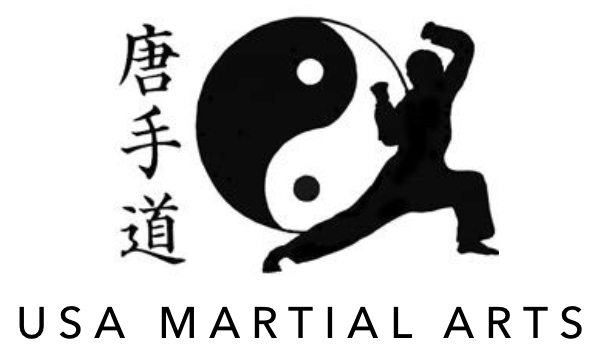“Black Belt Club” membership allows a student to train at 3 classes a week, plus one jujitsu class and one weapons class at the Woodbury or Naugatuck locations. Each member is entitled to an additional 5% discount on all Asian World of Martial Arts merchandise, an embroidered 2” black belt to be displayed, and a “Black Belt Club” patch. The cost is $19.95 per month and a one time $25 cost for the embroidery and belt.
Uncategorized
Change in the Woodbury Schedule
Effective October 16, 2015 the Friday “all ranks” class for ages 7 thru adult will be moved to the 6:00 – 7:00 PM time slot. Immediately following the karate class will be a 45 minute “Family Jujitsu” class for ages 9 thru adult.
CT Yankee National Tournament Rules
All divisions must have 2 competitors to complete division, If not competitor moves up.
Legal Age Rule: The contestant’s legal age is their chronological age, no exception. A competitor may only compete in that division designated by his/her chronicle age – Adult division 18 years and older, youth division 17 years and younger, senior division 35-45, executive division 46 & older.
Required Officials: Five officials, 1 referee and 4 judges are required for each ring. Exceptions can be made at the discretion of the officials. This will include Weapons, Forms, Breaking and Sparring.
Powers of the Referee: Warning and penalty points are determined by a majority decision. A center referee cannot overrule a majority call of the officials.
Form/Weapons Uniforms: T-shirts, tanks tops and sweat shirts are allowed if they are part of the contestant’s official school uniform (USA Martial Arts students must uniforms in all divisions)or lists the school’s name or logo on the uniform top. Uniforms in the form divisions are allowed more liberties because form is not one-on-one competition where the uniform could cause a decisive disadvantage or advantage to a contestant. Removal of the uniform top is allowed in form competition if the removal is considered relevant to the artistic expression or safety of the contestant. Shoes may be worn in form competition if they do not damage or mark the competition floor. Sparring Uniforms: Uniform top or martial arts t-shirts only. No tank tops or sweatshirts. Responsibilities: It is the contestant’s responsibility to know the rules and to be ready for competition when called to do so. They must be suitably attired and at the appropriate ring when competition begins. Three calls will be made for competition, a first call, a second call, and a final call. If the contestant is not at his/her ring to compete when competition begins, he/she will not be allowed to compete. If a contestant leaves a ring after the ring competition begins and is not present when his/her name is called to compete, their name will be called 3 times at ringside to compete. If he/she is not present to compete on the third call, they will be disqualified.
Arbitration: All decisions from the tournament coordinator are final.
SPARRING Under Black Belt Youth and Adult Point Values: 1 point awarded for each punch or kick that scores. 3 point match, 2 minute time limit. NO HEAD CONTACT. Light touch to the body. Black Belt Youth (17 & under): 5 point match, 1 point awarded for each punch or kick scored. 2 minute time limit. NO HEAD CONTACT. Light touch to the body. Black Belt Adult (18 & older): 5 point match, 1 point awarded for each punch or kick scored, 2 minute time limit. NO HEAD CONTACT. Light touch to the body. Warnings & Penalties: A penalty point is awarded to the opponent on each infraction of the rules. If a contestant receives 2 penalty points on any one given match, he/she is declared the winner. Illegal Target Areas: Spine, face, head, back of neck, sides of neck, groin, legs, knees and back. A Penalty point will be awarded on first infraction, second infraction will result in disqualification. Competitors Attitude/Behavior: If a competitor exhibits in the opinion of the referee and judges (majority), unsportsmanlike behavior he/she will be disqualified. This will include any outside involvement (i.e.: coaching, inappropriate remarks, etc., etc., etc.) Causes of Penalization: (this is a partial list of possible penalization and may be used as a guideline to follow: 1. Attack of illegal and non-target areas. 2. Using illegal techniques. 3. Running out of the ring to avoid fighting (not fighting out). 4. Falling to the floor to avoid fighting. 5. Continuing after being ordered to stop fighting after break. 6. Excessive stalling. 7. Blind, negligent or reckless attacks. 8. Uncontrolled technique 9. Any un-sportsman like behavior 10. Sweeps, Takedowns, Grabs, and/or Ground Fighting Required Safety Equipment: Hand Gear, Foot Gear, Head Gear, Mouthpieces, and Groin Cups (male competitors only) are mandatory for all competitors in all sparring divisions. Equipment must be in good state of repair and must be free of heavy taping, tears or any other repairs that may cause injury. The approval or Page 3 of 3 denial of the equipment is ultimately determined by the tournament’s head rules arbitrator.
WEAPONS & FORMS Safety: Referee should check all weapons for safety. Weapons are subject to referee’s approval (no sharp weapons allowed.) Spectators: Referee should make sure all spectators and competitors are at a safe distance from the performing competitor. Drop of Weapons: If a contestant unintentionally drops his/her weapon, he/she is automatically disqualified. The referee may allow the contestant to start over and demonstrate his/her form but no score will be given. This will be explained to the competitor in the event of the infraction. Time Limit: All form contestants have a maximum of 3 minutes to present and perform their routine. The time starts once the competitor enters the competition area. A contestant whose form exceeds the 3 minute time limit will be disqualified. Contestants in the Grand Championship run-off will receive 4 minutes to present and perform their routine.
BREAKING Breaking materials: Wood only! Concrete or other non-wood materials are not to be used for breaking (Concrete Blocks are allowed to support wood materials as long as the bottom surface of the block contains a protective surface between the block and the gym floor i.e.: cardboard, rug, tarp). Competitors must supply their own wood. Stations: Under Black Belt Competitions 2 Stations Max Black Belt Competition: 3 Stations Max – Stations may contain combined breaks as long as one foot does not move from its position on the ground (foot may rotate, but not move from the original position of the first break) Divisions: For adult black belt break only, there will be 2 divisions: Power Breaking and Creative Breaking. Competitors may only enter 1 Breaking Division. Time Limit: Competitors shall have 3 minutes to setup, explain and perform their routine. It is highly recommended that multiple board breaks are pretaped/assemble together in order to decrease setup time.
Forms Classes Scheduled
We have monthly forms only classes (all ranks) scheduled at the Woodbury and Naugatuck studios. All park & recreation locations students are invited and there is no charge. The classes usually meet on the first Sunday morning at 8:00 AM in Woodbury (ages 13 & up) and in Naugatuck (ages 7 & up) on the first Tuesday of the month @ 7:00 PM. Due to the Labor Day Holiday the classes will meet on Sunday, September 13th in Woodbury and Tuesday, September 8th in Naugatuck.
Just a Reminder …
I recalled with one of the instructors an incident back in 1999 where one my students did the 9:00 AM class in Woodbury and did not get picked up from class until 4:00 PM. The grandfather forgot that he was designated to pick up the boy from karate as the parents were both out of town. This was a rare occurrence but it could happen. Please make sure that your child knows your phone number and that of the person responsible for a ride home.
STUDENTS SHOULD NEVER ACCEPT A RIDE HOME FROM KARATE FROM A STRANGER.
The South Korean Flag
Depicted on the flag is a circle divided equally and locked in perfect balance. The red section represents the Yang (plus) and the blue section the UM (minus), an ancient symbol of the universe which originated in China. There two opposites express the dualism of the cosmos: fire and water, day and night, dark and light, construction and destruction, masculine and feminine, active and passive, hot and cold, plus and minus, and so on.
The central thought in the T’ae Kuk indicates that while there is a constant movement within the sphere of infinity, there are also balance and harmony. Three bars at each corner also carry the idea of opposition and balance. The unbroken bars stand for heaven; the opposite three broken bars represent the earth; the two bars with a broken bar in-between symbolize fire; the opposite is the symbol of water.


